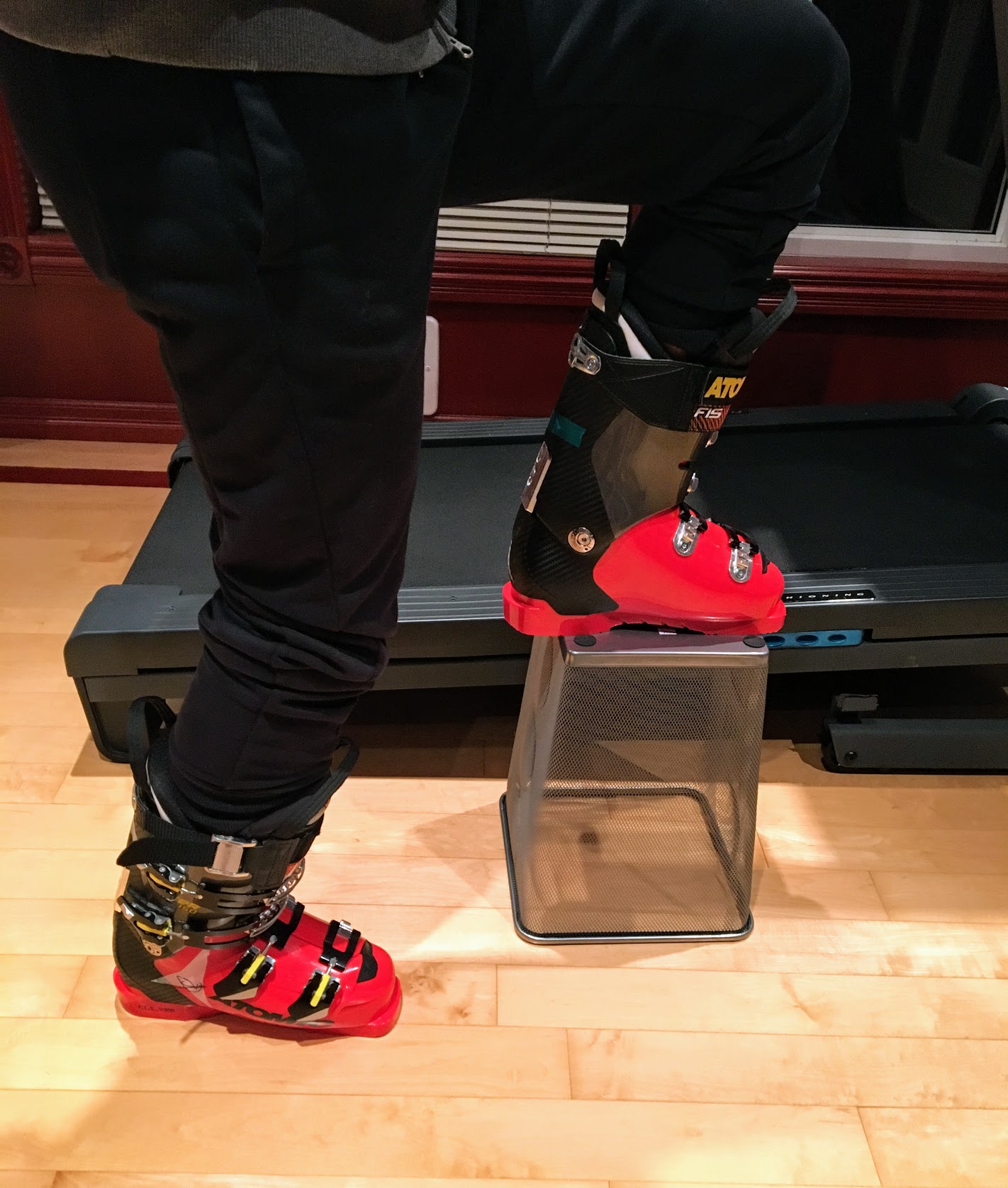@Skitechniek nah - I already agreed that tip lead is unavoidable (unless you're on telemark skis) but I don't see the positive relationship between forward and tip lead. Positive tip lead has more to do with the boot cuff and counter than anything else, in my mind.
Just say exactly what you think - you're saying they create it to get forward? Or were you agreeing with me that they're not trying to get any more forward at the bottom fo the turn? Which is it, I'm unclear from your posts.
Basically, at high edge angles, you will normally need to have some tip lead. This
article was well received and it included this photo, which is the reason you need tip lead at a big vertical separation (i.e. the big angles after the apex) as well as why it tends to shoot forward at the turn as they relax and release:
It's introduced by the boot cuff, so as you move the inside boot "up" the boot cuff will force that foot to move forward and maintain the same shin angle...
the question is: do you not try to control how much it moves forward and let it do whatever it wants (i.e. uncontrolled) or do you keep it in check and only let it get ahead as much as you mean or need it to? But I will leave you this as well - it looks superhuman, which is why it's printed on my hotbox:
There is some interesting biomechanics at work there, to allow what you see above to exist, that I will not get into here.
For me, it's not as much about what geometry this or that has, but what the intent and effort of the skier is. I will prefer a functional tension and trying to keep that ski back will add this functional tension and actually prevent me from getting back on the outside ski = like I said easy to demonstrate on the floor by pulling your heels back while standing up. The contrary demonstration is moving one foot ahead and observe how it does nothing to move the hips either back or forth... if anything it will make your hips move back, to stay in balance, so with a net result of putting the hips more back than otherwise!
For some reason, we all keep looking at photos of people that can deadlift like 600 lbs and we try to extrapolate this to our own skiing, looking for relationships and ratios and geometry of things. I deadlift 50 lbs on a good day. I don't try to compare what Marcel's outside ankle can do with what my outside ankle can do, at the same lean angles and radius, no comparison between his recovery ability and mine, no way I can get back forward from being as far back as he can - we always need to be very clear about what and who we're looking at!
As far as creating it on purpose? Well, almost everything has a time and a place. If you needed to drop the hips quickly, shuffle is the fastest way. I even taught it briefly, a very long time ago, I was told by "some coaches in the know" that that's how you create big angles. Nothing can be further from that - in fact, I was then specifically told to stop doing it myself if I ever want to pass level 2...
The problem is that for many, it is the only way to get angles... that's one of the reasons I'll continue to say "uh-uh"

. The other one being that I think it interferes with good skiing most of the time

and there's some biomechanics we could get into...
Not because it's not done at all anywhere in the world or something funny like that, but because it rarely, if ever, has a functional and positive result... although if you're going to believe USSA's "the wall" you'll think it's the thing to do in all turns everywhere, functional tension be damned!
p.s. I don't want to get into much details here, but think about it this way: the foot you just shuffled forward will be your new outside ski very soon and it will obviously be far ahead of the hips when you transfer weight to it... how do you get back forward in time to bend the ski?
p.s2. Yes, radius is bigger at the top of the turn because if you consume the pressure early, you're done for. You need to save the pressure for when it makes the biggest bang for the buck!


 . The other one being that I think it interferes with good skiing most of the time
. The other one being that I think it interferes with good skiing most of the time